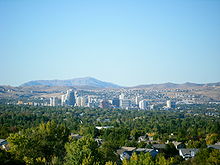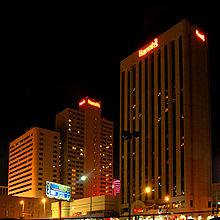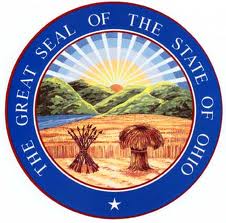All roads lead through Reno, more or less, if you’re dealing with Amazon.com. Now the Biggest Little City in the World is hoping to export high-tech instead. A corridor to that purpose, nicknamed “Startup  Row” has sprung up downtown. A city that was struggling for an identity 15 years ago and having to come to grips with a failing casino industry is now bidding for a Tesla battery plant. (“Reno is not far from one of the few lithium deposits in the country, it is relatively close to Fremont, Calif., where the vehicles will be assembled, and its industrial park has tens of thousands of acres of land for the auto company’s new expansive factory.”)
Row” has sprung up downtown. A city that was struggling for an identity 15 years ago and having to come to grips with a failing casino industry is now bidding for a Tesla battery plant. (“Reno is not far from one of the few lithium deposits in the country, it is relatively close to Fremont, Calif., where the vehicles will be assembled, and its industrial park has tens of thousands of acres of land for the auto company’s new expansive factory.”)
“Instead of poker payouts, Reno now boasts of e-commerce ventures, an Apple data center and a testing ground for drones,” reports the New York Times, which points out that Reno is but a four-hour drive from San Francisco. Unemployment has fallen to 7% (good by Nevada standards), housing prices are back up and companies like Zulily are expanding their presence. Unlike Reno, Las Vegas is still fundamentally about entertainment — and what a variety it has. But both cities have seen that a casino-based economy can’t carry you through hard times. And, like Macao, both cities have to import a workforce for high-skilled jobs … the consequence of Nevada‘s historical contempt for higher education.
 Still, the prospects for Reno are dramatic: “Towering old casino buildings could be turned into student dormitories or condos. Storefronts could house technology companies. The new drone research building could host an incubator space for businesses.” Neon doesn’t exactly light up prospective employers. Economic Development Authority of Western Nevada President Mike Kazmierski says, “That image of a second-tier kind of Vegas is embedded in their heads.” That’s too bad and shouldn’t be the case. Reno has a charm entirely its own. It’s not a second-rate anything.
Still, the prospects for Reno are dramatic: “Towering old casino buildings could be turned into student dormitories or condos. Storefronts could house technology companies. The new drone research building could host an incubator space for businesses.” Neon doesn’t exactly light up prospective employers. Economic Development Authority of Western Nevada President Mike Kazmierski says, “That image of a second-tier kind of Vegas is embedded in their heads.” That’s too bad and shouldn’t be the case. Reno has a charm entirely its own. It’s not a second-rate anything.
It’s good news and bad news from Ohio. The good news is that casino revenues are up 24%. The bad news is a 7% same-store decline. Penn  National Gaming (-1%) held market share better than Caesars Entertainment, down 11%. Hollywood Toledo — the only property to post an increase — had one particularly impressive metric, grossing $206/slot/day, a decidedly above-average number. Pinnacle Entertainment‘s Belterra Park, by contrast, posted a miserable $84/slot/day — far below Wall Street projections. (The two casinos operate in different markets, it should be noted.)
National Gaming (-1%) held market share better than Caesars Entertainment, down 11%. Hollywood Toledo — the only property to post an increase — had one particularly impressive metric, grossing $206/slot/day, a decidedly above-average number. Pinnacle Entertainment‘s Belterra Park, by contrast, posted a miserable $84/slot/day — far below Wall Street projections. (The two casinos operate in different markets, it should be noted.)
The two Horseshoes continue to lose business to racinos, with double digit declines both in Cleveland and Cincinnati. Thistledown Racetrack (-3.5%) recaptured in the ‘burbs some of what Caesars lost in downtown Cleveland. All in all, this has to be a somewhat sobering outlook for the two racinos which are yet to open. Ohio’s not even at its full, statutory capacity for gambling and it’s already saturated. There’s additional money to be made out there — but at the price of everybody taking a smaller pie slice.

